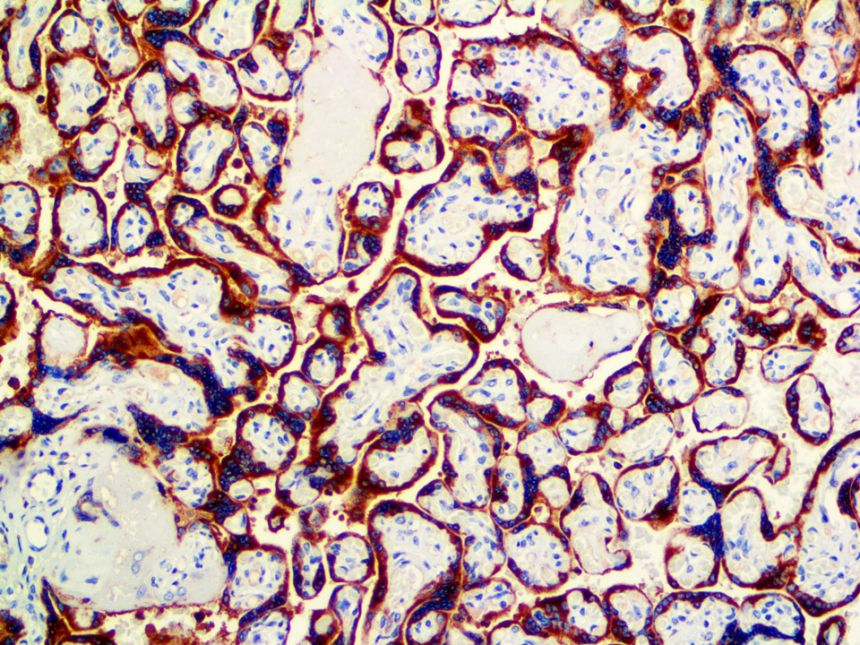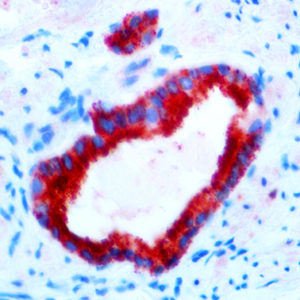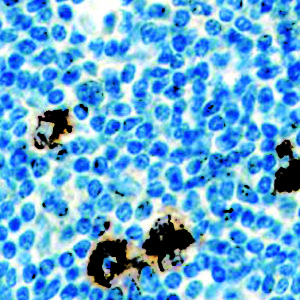
IHC of hPL on an FFPE Placenta Tissue
| Intended Use | For In Vitro Diagnostic Use | |||||||||||||||||||||||||||||||||||
| Summary and Explanation | Human placenta lactogen (hPL), also known as human chorionic somatomammotropin (HCS), is a polypeptide placental hormone. Its structure and function are similar to that of human growth hormone. It modifies the metabolic state of the mother during pregnancy to facilitate the energy supply of the fetus. It is first detectable in the maternal serum in the fifth week of gestation and reaches a plateau by the thirty-fourth week. hPL is expressed in the syncytiotrophoblastic cells of choriocarcinoma. A rare variant of trophoblastic tumor has been reported in the testis with resemblance to uterine placental site trophoblastic tumor. It consisted purely of intermediate trophoblasts, which was diffusely positive for hPL and focally for B-hCG. | |||||||||||||||||||||||||||||||||||
| Antibody Type | Rabbit Polyclonal | Clone | Polyclonal | |||||||||||||||||||||||||||||||||
| Isotype | IgG | Reactivity | Paraffin, Frozen | |||||||||||||||||||||||||||||||||
| Localization | Cytoplasmic | Control | Placenta | |||||||||||||||||||||||||||||||||
| Presentation | hPL is a rabbit polyclonal antibody derived from cell culture supernatant that is concentrated, dialyzed, filter sterilized and diluted in buffer pH 7.5, containing BSA and sodium azide as a preservative. | |||||||||||||||||||||||||||||||||||
| Availability |
| |||||||||||||||||||||||||||||||||||
| Note: For concentrated antibodies, please centrifuge prior to use to ensure recovery of all product. | ||||||||||||||||||||||||||||||||||||




